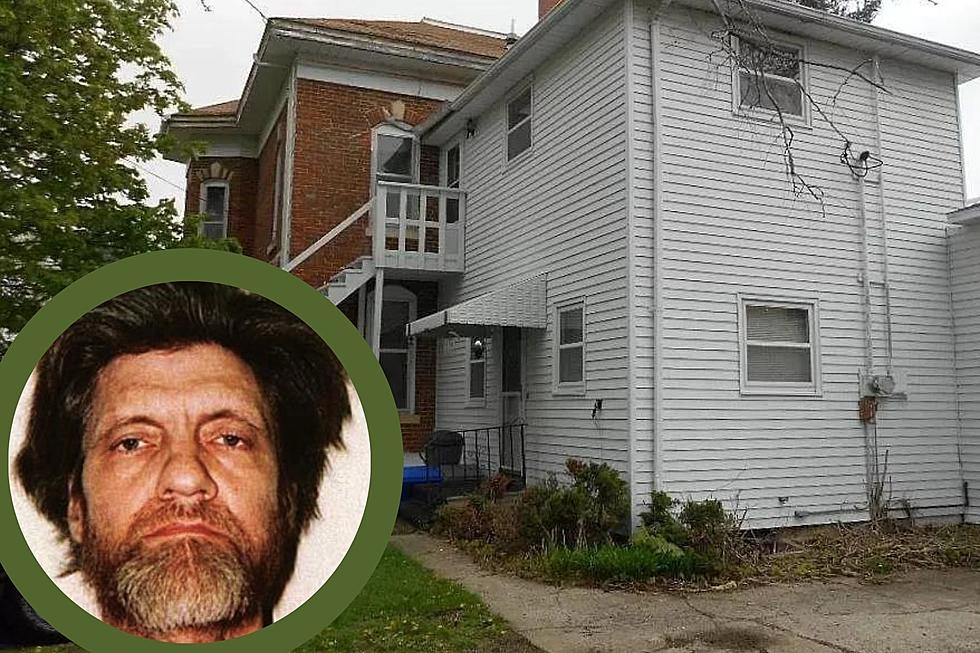
Unabomber Ted Kaczynski’s Family Lived in Eastern Iowa For 3 Years
A man whose reign of terror in the United States started in 1978, was finally ended by the FBI in 1996. Or should we say it was ended by his brother, who spent several years living in this apartment building and later taught school in the same eastern Iowa community?
In 1978, a homemade bomb exploded at a university in Chicago, Illinois. It would be the beginning of a string of 16 bombs, that would become more sophisticated with time, that Ted Kaczynski would either mail or hand-deliver before he was ultimately arrested.
The following year, a task force was formed to investigate. It would go by "UNABOM", according to the FBI. It stood for UNiversity and Airline BOMbing. Solving the case was extremely difficult but the importance of doing so was abundantly clear. The task force would ultimately have more than 150 people working on it on a full-time basis.
Years later, investigators would find out that the victims of the bombings were chosen at random from Kaczynski's research at libraries.
In 1995, Kaczynski sent the FBI a 35,000-word essay. His intent was apparently to not only explain his view of society but also his motives over the previous 17 years. After a ton of back-and-forth discussion among the FBI and Attorney General, the essay was published in The Washington Post.
Kaczynski's brother, David, saw the essay and contacted the FBI with his concerns. Among them, Ted had taught at a school where two of the bombs had been placed... the University of California at Berkeley. David also described how Ted had moved around before living in a cabin that he had helped Ted build outside Lincoln, Montana. A cabin that Ted would ultimately be arrested in.
This video shows the cabin, what was found inside, as well as photos of Ted Kaczynski being arrested there.
In addition to what he told the FBI, David Kaczynski gave them items that his brother had written. It was the analysis of those items that led to a search warrant that was executed on April 3, 1996, at Ted's cabin. Inside, the FBI found and arrested Kaczynski. They also discovered everything they needed for their case. There were tens of thousands of pages of journal pages written by hand, descriptions of crimes committed by the Unabomber, bomb-making materials, and a live bomb, just waiting to be mailed.
Ted Kaczynski's bombs killed three people and injured 23 others. He would plead guilty in January of 1998, and be sent to federal prison.
Years before Ted Kaczynski terrorized the country, his family lived in an apartment building at 307 E. Main in Lisbon, Iowa (photo above) for three years. They resided there from 1966 to 1968. Cornell College reports that Ted likely was there only a few weeks a year, which makes sense since he would've been about 24 years old when the family moved in. However, David was a teenager when the Kaczynski family started to call Lisbon home.
David Kaczynski returned to Lisbon several years after his family moved away. Cornell College says he taught English at Lisbon High School for two years in the middle 1970s.
A movie about the Unabomber, called 'TED K' was released in March 2022. The trailer is below. According to Rotten Tomatoes, it's available on Amazon Prime, Apple TV, and VUDU.
Did Ted Kaczynski begin to think about sending bombs around the country while in Montana in the 1970s, or did those thoughts actually begin in this apartment building in Lisbon, Iowa? We're left to wonder, while being relieved that he was finally caught.
On Christmas Eve 2021, the Los Angeles Times reported that Ted Kaczynski was transferred from a federal Supermax prison in Colorado to a federal prison medical facility in the state of North Carolina. The U.S. Bureau of Prisons would not provide the reason for the transfer of Kaczynski, who turned 81 on May 22, 2023.
Kaczynski died the morning of June 10, 2023, while in prison.
KEEP READING: Scroll to see what the big headlines were the year you were born
25 True Crime Locations: What Do They Look Like Today?


![These are The Hawkeye State’s 25 Most Violent Cities [GALLERY]](http://townsquare.media/site/676/files/2021/10/attachment-RS24808_GettyImages-666368380.jpeg?w=980&q=75)
